Howard Andrew Jones's Blog, page 8
July 18, 2018
Tabletop Gaming: Tableside Resources
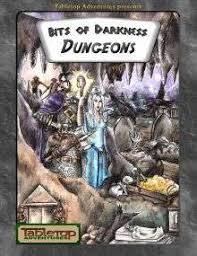 Some of the resources I’ve talked about in previous articles are actually useful both as adventure/campaign building resources, and as table side resources, meaning that they’re helpful both during prep time and when you’re actually running the game. As I mentioned, these are just the ones I’ve read and liked best. If you’re aware of others, please share.
Some of the resources I’ve talked about in previous articles are actually useful both as adventure/campaign building resources, and as table side resources, meaning that they’re helpful both during prep time and when you’re actually running the game. As I mentioned, these are just the ones I’ve read and liked best. If you’re aware of others, please share.
Tableside resources are the items you keep on hand to help you riff with descriptions, or to add a little detail that can entertain the players or bring the environment to life. I’ve previously mentioned the Raging Swan Press books like 20 Things I, II, and III, and I Loot the Body, and you definitely ought to be familiar with those and have them on hand. Ultimate Toolbox and the D30 books I mentioned last time have some wonderful aids as well.
Tabletop Adventures has some mighty entries in this entire category. If you need some interesting things to see if your players are walking through some caverns, or the plains, or the wilderness, or if you need some extra little incidents or a few extra rooms or curious land features, you can keep these cards on hand. They come in all kinds of flavors, like Bits of Dungeon, Dungeon II, Bits of Darkness: Caverns or Bits of the Boulevard (and more). And then there’s the whole Into series, like Into the Mountains or Into the Swamp or Into the Wildwood or Into the Open. In each supplement you get fantastic details that help bring the particular setting to life – the characteristics of a temperate forest versus a deciduous forest, say, and the kind of flora and fauna typical of each. Sometimes you even get a weird new monster to encounter as well. I’m pleased to have them all.
I’ve already mentioned Raging Swan Press and it’s time to mention them again with their Caves & Caverns, and Wilderness Dressing, and Random Wilderness Encounters. Creighton Broadhurst’s products seem ever reliable in their ability to provide interesting tables and ways to bring these settings to life, both before the game sessions starts, and while the game is running. Caves & Caverns and Wilderness Encounters double both as event books and as scene setters, whereas Wilderness Dressing, like its sister books in the urban and dungeon category, help present engaging sights and people for your adventurers to encounter in the countryside, or the sea, or, really, anywhere above ground that’s not in a settlement. Whereas I prefer to have my dungeons dungeons planned out beforehand, I like to keep the Urban Dressing, Urban Dressing II (mentioned last post), and Wilderness Dressing books in easy reach during the game.
Just to make things confusing, there’s another Wilderness Encounters from Assassin Games, with a random list of interesting encounters, divided into different times of day. These aren’t necessarily monster battles, just curious things that might be met out in the wilds. Their sister book, Random Urban Encounters, is in much the same spirit.
You want to generate some poisons and potions? How about some creative, inventive ingredients when your characters run across them? Try out two more clever and inexpensive supplements from Assassin Games: A Collection of Poisons and Potion Generation.
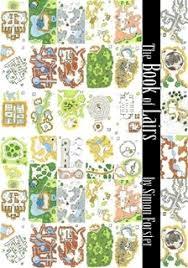 Smaller side encounters can add a little spice to game adventures, and I’m quite taken with Simon Forsters Book of Lairs that, wait for it, contains a variety of monster lairs. None of them are quite detailed enough to count as a full-fledged dungeon, and most won’t occupy a full night’s gaming, but each entry adds enough components to make, say, that encounter with the owlbear or ettin more memorable, and comes with a little map. There are even a few creative new monsters. I recently saw that he has some additional products in the same line…
Smaller side encounters can add a little spice to game adventures, and I’m quite taken with Simon Forsters Book of Lairs that, wait for it, contains a variety of monster lairs. None of them are quite detailed enough to count as a full-fledged dungeon, and most won’t occupy a full night’s gaming, but each entry adds enough components to make, say, that encounter with the owlbear or ettin more memorable, and comes with a little map. There are even a few creative new monsters. I recently saw that he has some additional products in the same line…
How about some weird vendors? Numerous interesting people with numerous interesting goods for sale, and maybe a great backstory with some cool hooks that might lead to an entire adventure? Yeah, you need this: Wilderlands High Adventure: 100 Street Vendors of the City State. I’ve been using it for years and I’ve yet to get tired of it.
Finally, how about some cool weird lists to get the creative juices flowing or to provide answers to questions the players throw at you? Look no further than the (inexpensive) Miscellanium of Cinder or Tower of Krshal?
Honorable Mention: I can’t vouch for a product I haven’t yet read, but I hear great things about People of Pembrooktonshire for a set of entertaining, weird non-player characters.
Other articles in my “best of” tabletop gaming GM resources articles include Campaign and Adventure Design and Treasure.
July 16, 2018
Tabletop Gaming: Campaign & Adventure Design
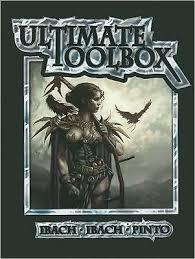 As I mentioned last week, RPGNow has a Christmas in July sale coming up soon, so I’m taking a look at my favorite tabletop gaming resources. I’ve accumulated a lot of them over the years, so I’ve divided a discussion of the tools across multiple articles. I last looked at treasure. This time, I’m looking at third-party game products that are full of creative lists and descriptions, advice about campaign and adventure design, and adventure seeds.
As I mentioned last week, RPGNow has a Christmas in July sale coming up soon, so I’m taking a look at my favorite tabletop gaming resources. I’ve accumulated a lot of them over the years, so I’ve divided a discussion of the tools across multiple articles. I last looked at treasure. This time, I’m looking at third-party game products that are full of creative lists and descriptions, advice about campaign and adventure design, and adventure seeds.
It may be that there are some excellent ones out there that I haven’t read — if so, let me know. Here, though, are the ones I most use.
Ultimate Toolbox is an expanded reimagining of the earlier Toolbox, both from Alderac. Ultimate Toolbox lacks the 3.0/3.5 statblocks of its predecessor, and it ports over almost (but not quite all) the rest of the material from the original book. But then it adds scads more simply great stuff. You want to design your campaign world, or generate some tavern drinks, or toss some riddles into your campaign or name some dwarfs or, danged near anything else you can think of, this is a must have, both during adventure prep and while you’re running the game. I’d never part with this book.
Another keeper is Frog God Games’ Tome of Adventure Design, with some of the most involved villain generation and motivation tables I’ve ever seen, not to mention some excellent plot assistance tables. The result is just grand. It can also assist greatly with the design of dungeons and is chock full of excellent features and details that bring your dungeon adventure to life.
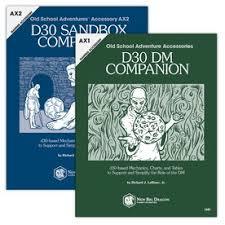 Richard LeBlanc Jr., the genius behind New Big Dragon games, has three essential books: the D30 Sandbox Companion, which has more wonderful tools for putting your campaign together, especially if you’re wanting to design it in a more sandbox way, the D30 DM Companion, which has all kinds of great supplemental material and details for keeping your adventure running, and an alternate monster manual titled the Creature Compendium that’s become a mainstay of my adventure gaming because it has interesting and original critters that just beg to be dropped into your game. I always keep it handy. But wait, there’s more, because the New Big Dragon web site is chock full of great additional D30 tables – monsters, mythic sites, you name it. And LeBlanc has more stuff in the works, so I keep checking in. Here’s a link to his downloads page, but there’s lots of additional great material that can be downloaded from his blog.
Richard LeBlanc Jr., the genius behind New Big Dragon games, has three essential books: the D30 Sandbox Companion, which has more wonderful tools for putting your campaign together, especially if you’re wanting to design it in a more sandbox way, the D30 DM Companion, which has all kinds of great supplemental material and details for keeping your adventure running, and an alternate monster manual titled the Creature Compendium that’s become a mainstay of my adventure gaming because it has interesting and original critters that just beg to be dropped into your game. I always keep it handy. But wait, there’s more, because the New Big Dragon web site is chock full of great additional D30 tables – monsters, mythic sites, you name it. And LeBlanc has more stuff in the works, so I keep checking in. Here’s a link to his downloads page, but there’s lots of additional great material that can be downloaded from his blog.
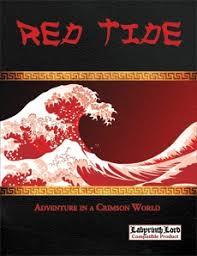 Another one stop place for genius material is with Kevin Crawford at Sine Nomine. I’ll provide more specifics about the excellence of his campaign materials in a later post, but I have to mention them because his incredible sandbox creation tools are all imbedded in his campaign settings. You can expand upon the setting material Kevin has already created within his books, or simply use them to create your own with his astonishingly creative and useful charts and tables. And he has settings galore, from the fantastic Africa of Spears of the Dawn to the deep space of Stars Without Number (which you can download for free so you can see just how fantastic Crawford’s work is) to a fantasy setting with a twist, Red Tide, which is where you’d probably want to stop if you were after sandbox material for more traditional western or eastern settings. It’s pretty magnificent. An Echo Resounding is an expansion and companion volume with even more assistance for sandbox building. (And the fellow has even MORE settings and stuff even than this.)
Another one stop place for genius material is with Kevin Crawford at Sine Nomine. I’ll provide more specifics about the excellence of his campaign materials in a later post, but I have to mention them because his incredible sandbox creation tools are all imbedded in his campaign settings. You can expand upon the setting material Kevin has already created within his books, or simply use them to create your own with his astonishingly creative and useful charts and tables. And he has settings galore, from the fantastic Africa of Spears of the Dawn to the deep space of Stars Without Number (which you can download for free so you can see just how fantastic Crawford’s work is) to a fantasy setting with a twist, Red Tide, which is where you’d probably want to stop if you were after sandbox material for more traditional western or eastern settings. It’s pretty magnificent. An Echo Resounding is an expansion and companion volume with even more assistance for sandbox building. (And the fellow has even MORE settings and stuff even than this.)
Included in every one of Crawford’s books are simply fantastic instructions for setting up and populating sandbox campaigns. I wish this kind of material had been around when I was a young man first playing these games, because it’s the primer we all needed for campaign building and never had. I buy nearly everything Crawford puts out because it’s so useful, highly creative, and extremely well-written and produced.
If you’re looking for villains, either for an adventure, or to be the secret manipulator behind the entire campaign, Scions of Evil from Raging Swan Press has you covered. Its jam-packed with interesting bad guys and minions and the plots they’re trying to hatch. Some of them even work in groups. It’s statted for Pathfinder, but the bad guys and their schemes can work to bolster any fantasy campaign.
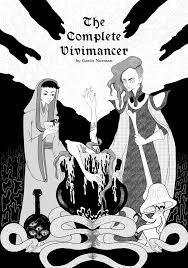 Speaking of awesome villains, here’s The Complete Vivimancer. You need a Vivimancer villain. Everyone needs a Vivimancer villain. You know those wacky hybrid monsters that turn up in adventures, and the awful experiments with living beings that are often background material in role playing games? Well, Gavin Norman came up with the character class that’s the mastermind behind all those terrible things – and other related horrible bits you probably haven’t thought of, complete with spells and features and more. I don’t know why everybody else isn’t using this book. I mean, I’ve been playing D&D since the freaking ‘70s and I’ve NEVER SEEN this character class. Although, honestly, it’s primarily inspired me to use it for villains.
Speaking of awesome villains, here’s The Complete Vivimancer. You need a Vivimancer villain. Everyone needs a Vivimancer villain. You know those wacky hybrid monsters that turn up in adventures, and the awful experiments with living beings that are often background material in role playing games? Well, Gavin Norman came up with the character class that’s the mastermind behind all those terrible things – and other related horrible bits you probably haven’t thought of, complete with spells and features and more. I don’t know why everybody else isn’t using this book. I mean, I’ve been playing D&D since the freaking ‘70s and I’ve NEVER SEEN this character class. Although, honestly, it’s primarily inspired me to use it for villains.
If you’re interested in dungeon design, there are three great sources – the aforementioned Ultimate Toolbox and the Tome of Adventure Design, and Dungeon Dressing from Raging Swan Press. It doesn’t just help you generate neat stuff to find in dungeons, it helps you come up with backstories for the things or people you’re placing.
For fleshing out other places, you might want to check out the 100 Oddities series. I’ve read at least a half dozen oddities PDFs and the 100 creative things in every one of the series are fabulous ways to help bring a setting to life. I’ve spent the most time with the Wizard’s Tower and Wizard’s Library supplements and I used all the gear in to populate a wizard’s lair with quirky material I’d never have dreamed up myself and that really entertained my players.
Along that line, it’s about time I mention the 20 things series from Raging Swan Press once more, which are replete with great details on almost limitless fantasy subjects, everything from objects you can find in a wizard’s tower and library to strange things to find in a curio shop. These three books and the ongoing material that’s available for free on his web site that will likely fill a fourth are excellent for helping ready an adventure and for sprucing one up on the fly. (Here’s the link again: GM’s Miscellany: 20 Things Volume 1, Volume 2, and Volume 3.)
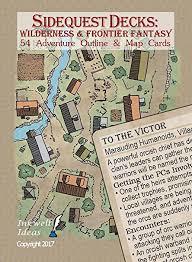 If you’re looking for quick adventure outlines, look no further than Sidequest decks from Inkwell Designs. These things rock. Each deck comes with outlines for 54 adventures. On one side of each card is an adventure outline with a hook, a thumbnail of the situation, the major flow of the adventure, and the villain. On the backside is an associated map. These card decks were one of my favorite finds at GenCon over the last few years, and I liked them so well I bought them again when they were re-released in a slightly re-organized fashion. The card decks are divided into categories like Dungeons, Caves, & Ruins, or Wilderness and Frontier Fantasy. Physical copies of the decks can be ordered here, or you can download them from RPGNow and print them yourself. Inkwell assumes that you’ll have the monsters and other information you need from whatever rulebooks you have lying about, and just focus on the material for a nifty story.
If you’re looking for quick adventure outlines, look no further than Sidequest decks from Inkwell Designs. These things rock. Each deck comes with outlines for 54 adventures. On one side of each card is an adventure outline with a hook, a thumbnail of the situation, the major flow of the adventure, and the villain. On the backside is an associated map. These card decks were one of my favorite finds at GenCon over the last few years, and I liked them so well I bought them again when they were re-released in a slightly re-organized fashion. The card decks are divided into categories like Dungeons, Caves, & Ruins, or Wilderness and Frontier Fantasy. Physical copies of the decks can be ordered here, or you can download them from RPGNow and print them yourself. Inkwell assumes that you’ll have the monsters and other information you need from whatever rulebooks you have lying about, and just focus on the material for a nifty story.
Urban Dressing 1 and Urban Dressing 2 are more fine entries from Raging Swan Press. These two books are wonderful for helping whip up a village or town and everything included within them, no matter if you’re want a cool temple, or statue, or market stall or tavern, graveyard or even a sage. They’re also great for keeping on hand in case you need to improvise something within the urban environment during the game. Book 2 goes into greater detail for specific kinds of settlements, be they logging towns, dwarven fortresses, war torn villages, or other places.
Lastly, I want to give an honorable mention to a product line that looks really cool and useful. I just can’t vouch for them personally because I haven’t read them. Look into the Castle Oldskull material and see what you think. There are products dedicated to dungeon design, world design, NPCs, and much more.
Other articles in my “best of” tabletop gaming GM resources articles include Tabletop Gaming: Treasure.
July 15, 2018
Novel Lessons 4.5: Between the Novels, Part 2
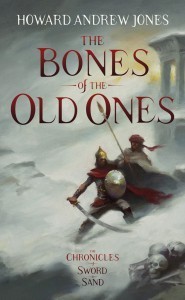 One of the reasons I wrote last week of learning from other genres is because of one of the problems plaguing me in the as-yet uncompleted The Maiden’s Eye. I’ll get to that in a moment, but first, some background.
One of the reasons I wrote last week of learning from other genres is because of one of the problems plaguing me in the as-yet uncompleted The Maiden’s Eye. I’ll get to that in a moment, but first, some background.
The unfinished third novel of Dabir and Asim had several problems leading to its abandonment, although the most important of those was the cancellation of the series. By the second or third month after the release of The Bones of the Old Ones, it was clear that no amount of good press was getting the book to move. It just wasn’t selling. My editor told me if I wanted to go ahead and finish the third book, that he’d publish it, but the writing seemed to be on the wall, and we both agreed to step away.
I set to work deciding what I’d work on next, coming up with several ideas I’d back burnered, outlining them in some detail before I allowed myself to mourn the end of the series I loved so well. I’ve since vowed that I will at least one day finish the third novel, but I have to admit that it was a little easier to walk away because it had some issues:
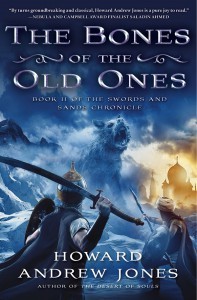 Even though I’d vowed to myself and my long-suffering wife that I’d know my villains really well before I started writing the next book, I didn’t. I knew the henchmen, and I knew many of the challenges before our heroes, but I didn’t know the villain’s motivation. Doh! I should have learned that lesson the LAST time, but since I hadn’t, the universe taught it to me again, and as I got closer and closer to the two-thirds mark the book began to spiral out of control.
Even though I’d vowed to myself and my long-suffering wife that I’d know my villains really well before I started writing the next book, I didn’t. I knew the henchmen, and I knew many of the challenges before our heroes, but I didn’t know the villain’s motivation. Doh! I should have learned that lesson the LAST time, but since I hadn’t, the universe taught it to me again, and as I got closer and closer to the two-thirds mark the book began to spiral out of control.Complexity — my goodness, is this one complex. It all takes place during a single week in Baghdad, and every night the caliph is having a story contest with his dinner guests, among whom are Dabir and Asim and Sindbad and some other notables. It was growing darned challenging to keep the stories coming and not slow down the pacing. I think I may finally have figured that out, though.
Most germanely, in addition to point 2, poor Dabir has to solve two unrelated mysteries at the same time all the rest of this is going on. He is, for all intents and purposes, functioning not like a Sherlockian, but more like a hard-boiled detective, albeit one with Sherlockian skills. At the time I’d begun writing I’d read almost no hardboiled detective stories, and very few real mystery stories at all. And that, fellow readers, was incredibly stupid.
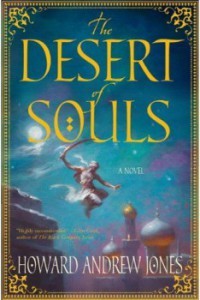 Point three closely relates to what I wrote last week about reading beyond the genre. If I was going to write some honest-to-goodness mystery stories then wouldn’t it have behooved me to read a lot more of them? Yes, yes it would have. And since 2013 I’ve read and loved scads and scads of them. I think, when I find the time, I can now write one properly. But to think I could pull one off in a satisfying way without really knowing the genre was sheer foolishness. I’d say it was arrogance, except I don’t remember thinking at any point “pfft, that looks simple, I can do that.” I just thought I’d seen enough mysteries, and that mystery played enough of a role in various stories I’d read, that I was familiar enough with the genre to make it work. I have since learned immeasurably by reading great mysteries over the last four to five years, and when I finally return to the book it will be a lot simpler to get the tone right. If you’re going to do a thing, I believe it generally behooves you to read what the best have done before you.
Point three closely relates to what I wrote last week about reading beyond the genre. If I was going to write some honest-to-goodness mystery stories then wouldn’t it have behooved me to read a lot more of them? Yes, yes it would have. And since 2013 I’ve read and loved scads and scads of them. I think, when I find the time, I can now write one properly. But to think I could pull one off in a satisfying way without really knowing the genre was sheer foolishness. I’d say it was arrogance, except I don’t remember thinking at any point “pfft, that looks simple, I can do that.” I just thought I’d seen enough mysteries, and that mystery played enough of a role in various stories I’d read, that I was familiar enough with the genre to make it work. I have since learned immeasurably by reading great mysteries over the last four to five years, and when I finally return to the book it will be a lot simpler to get the tone right. If you’re going to do a thing, I believe it generally behooves you to read what the best have done before you.
Going forward, my wife and son have suggested some great villains and master plans that I’m totally going to use. I’m still being pushed to interlink the two mysteries, and I still resist, and I’m not sure how I can retain the pacing and still have Arabian Nights like stories intercalated through it, but if I can pull it off… it will be a very, very fine thing.
Next week, though, I’ll look at my third Pathfinder novel, and what I learned writing that one.
July 13, 2018
Writer Chat: Setsu Uzume
 I’m always on the lookout for talented new sword-and-sorcery writers, or at least new to me, and I stumbled upon the work of Setsu Uzume in an issue of Grimgark magazine. Shortly after I invited Setsu to contribute to Tales From the Magician’s Skull issue 2, which will be available in print form any day now, and a few days ago we sat down, via e-mail, to discuss writing and fiction and all that good stuff. Without further ado, here’s what we had to say:
I’m always on the lookout for talented new sword-and-sorcery writers, or at least new to me, and I stumbled upon the work of Setsu Uzume in an issue of Grimgark magazine. Shortly after I invited Setsu to contribute to Tales From the Magician’s Skull issue 2, which will be available in print form any day now, and a few days ago we sat down, via e-mail, to discuss writing and fiction and all that good stuff. Without further ado, here’s what we had to say:
First, why don’t you give us a little background about yourself and your work.
I tumbled around a lot before winding up as a writer. When I was tiny, I wanted to be some kind of itinerant hero like Xena. I did a lot of theater, playing male and female characters, but when I auditioned for a specialized high school to pursue acting professionally, I didn’t get in. I figured, OK, I’m always doing bit parts and side roles so I’m either not cute enough or not femme enough to be a star. However, I had a strong martial arts background, so decided to do stunts instead. Then The Matrix came out and the shift to CGI didn’t bode well (plus, if you were gonna double for women in those days it was all rape scenes all the time), so I put that dream on hold while I went to college. Parallel to all of this was a love of story and storytelling, and I was starving for characters that looked and thought like me. So here we are.
If you were going to direct readers to your fiction, what would you most like them to see?
Grimdark Magazine is how we met, so I certainly recommend them. They were also recently nominated for a British Fantasy Award, which is super exciting!
I’ve got a story forthcoming in Sword and Sonnet, edited by Aidan Doyle, Rachael K. Jones, and E. Catherine Tobler.
PodCastle is where you’ll find me the most. I’m the host and assistant editor over there, and we also received several nominations for a Parsec Award.
As the host, I get to introduce and do a brief analysis of the stories we present each week. PodCastle was also the first place to publish my stories long before I started working there, and the whole Escape Artists community has been amazing. It’s such a knowledgeable and welcoming group of people.
Do you have some favorite writers? I’d love for you to discuss what you love about them, and what might be learned from studying their craft.
First I need to say that “favorites” have everything to do with resonance and little to do with craft. Art is love, and there’s nothing more subjective than love.
The Broken Earth series by N.K. Jemisin was excellent in every way; but it didn’t sink into my heart the way other stories have done.
Terry Pratchett is my absolute favorite author of all time. His prose is light, silly, and idiosyncratic; and it always surprises with its insight, wrath, and compassion. Whether you’re in the mood for satire on crime novels, high fantasy, folklore and witches, steampunk, or any other flavors of fantasy, the Discworld series has something for you. Many of the books break down by issue, such as Small Gods discussing religion in general, or The Last Hero examining the tropes of the heroes’ journey, or Monstrous Regiment, about gender roles and women in the military, or Jingo, which is self-explanatory. Those are the books I read over and over and get something new each time.
China Miéville is a diligent researcher and brings that expertise to bear the same way Pratchett does. Whether it’s history, politics, linguistics, or any other topic, his efforts show through in his work. His renditions of cities-as-characters are second to none.
Seth Dickinson and Joe Abercrombie are the two authors I would most like to emulate. They both write dark, gritty worlds. Dickinson brings pathos and the kind of searing intelligence to his work that you’d expect from science fiction; but in a fantasy setting. Abercrombie makes my little heart happy because his characters are sloppy, flawed, and human. There are no clean, streamlined fights in his books — they’re messy, clumsy, and the wry humor hits just the right notes within the greater symphony of war and politics. If you read Abercrombie’s books and shed one tear for every 10 laughs, we can be friends.
As far as studying craft, there’s as much to learn from books you don’t love. I’m not a fan of Janet Evanovich’s books, but they’re popular for a reason. I don’t enjoy poetry overmuch, but it has a lot to teach about the texture of language. Non-fiction will give you tons of ideas and frameworks to model. To a lesser extent, even bad books are useful. Ayn Rand and Joan Didion are monsters; but they’re great examples of the interplay between a person’s context and their worldview. I also recognize that I named a bunch of white dudes as favorites, and a bunch of white women as problematic. Clearly I need to read more broadly, too.
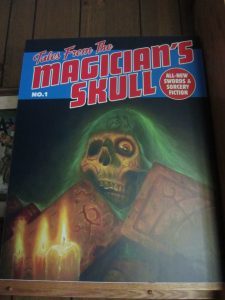 What writing projects are you working on right now?
What writing projects are you working on right now?
I heard someone say that you shouldn’t discuss a project until it’s ready to launch, because it’ll create expectations, or jinx it, or something.
That said, I just finished a new novel that’s way outside my comfort zone, and I’m low-key apprenticing with a film crew to learn the nuts and bolts of movie-making. The latter is turning out to be a lot of carrying sandbags up and down hills in the rain, but that’s a nice break after being head-down in the book for four months.
Dream writing project – if you could get paid to write anything, what would you most like to draft?
I found the Dragon Age series and the Witcher series compelling. I suspect that all entertainment is moving toward the ultimate goal of holodecks, and interactive fiction is what we have until the technology catches up. Learning how to structure an evolving, interwoven, choice-based RPG (with romances!) won’t be easy, but I’d love to work on a game like that.
I’d love to make an action movie as well, but screenwriting has its own learning curves.
What do you most like to do when you’re not hunched over your computer screen crafting stories?
I paint, bake, play violin (poorly), and sing.
While I will never be a stunt professional, I still derive great pleasure from those activities. If you’re interested in similar, the local SCA chapters are very generous with their time and equipment.
I also got into horseback archery as an adult, and any day I get to spend with horses is a good day. I got my motorcycle license a few years ago, but I connect better to 1000lbs of muscle than 900ccs of engine.
What are your favorite pieces of advice for other writers? Maybe advice you’d have wanted to hear a few years ago.
“I learn a lot from Nick Mamatas (Starve Better), but he doesn’t do feelings, so make sure you’ve got your insecurities shored up before you head his way.
One of the things he mentioned is that the business side of publishing is an effort to churn out personalized experience like a factory-made product. That’s how we get trends. But your viewpoint, your voice, and the things that are important to you won’t sound like anyone else. “Drowning Stones” is an example of that. The prompt I got was “a classic adventure story, with ruins and undead,” and you can take that in four million different directions. Some of what you write will be pastiche and some will be original; but the way you synthesize information will inform your world, your characters, the conflict, and its resolution.
It takes about 10 years to get good at something. Trust yourself, and keep going.
Setsu’s web site can be found right here.
July 12, 2018
Dreams of My Father
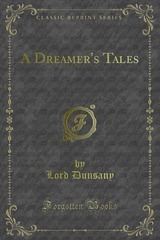 For the first time in ages, I dreamt of my father. I was walking across campus with my backpack over one shoulder, as I would have been lo those long years ago, and I spotted him through a corner window that never existed, standing behind his desk and talking on a phone — in an office that never existed, for Dad was never on the first floor with a huge window. But he was talking to someone about how I was coming to see him prior to Freshman orientation.
For the first time in ages, I dreamt of my father. I was walking across campus with my backpack over one shoulder, as I would have been lo those long years ago, and I spotted him through a corner window that never existed, standing behind his desk and talking on a phone — in an office that never existed, for Dad was never on the first floor with a huge window. But he was talking to someone about how I was coming to see him prior to Freshman orientation.
At some level I was aware that this was a dream and that he was gone, and I was long past this point in my life, but I raised my hand at him and smiled and he raised his hand up to me and smiled and damn, but that was great, because I could see him. Not just for a frozen moment in a memory, or photograph, or even a rare shot of him on video tape, but I could look at him, living, as long as I wanted, and meet his eyes, and he was looking back at me.
I didn’t realize how powerful it was until a little later this morning when I thought about it and wept. It’s been eighteen years. It’s been long enough now that it’s impossible to imagine me calling him up and catching up on everything that’s happened, like I used to fantasize about. The acute pain of his absence is gone. But I will always miss him. I would so like for him to have known my kids as adults, or even to have met my youngest. What I wouldn’t give to tell that kid with the backpack that you’re not always going to be walking across campus and have the chance of running into your dad.
I can’t do that, but I can try to take time to be present in the lives of my kids, as my father always did. Maybe I can pass that on, and one day they’ll get it too.
July 11, 2018
Tabletop Gaming: Treasure
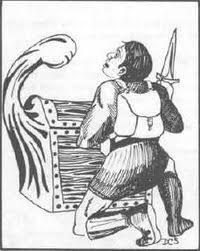 Every year RPGnow/Drivethrurpg.com has a Christmas in July sale. It’s not under way yet — usually it takes place around the end of the month. Almost every year I get a wish list together, save up some PayPal cash through some trades, and get ready to splurge.
Every year RPGnow/Drivethrurpg.com has a Christmas in July sale. It’s not under way yet — usually it takes place around the end of the month. Almost every year I get a wish list together, save up some PayPal cash through some trades, and get ready to splurge.
I love reading this stuff even if I never use it in a game — even if I’m NOT gaming — because the best of it throws off sparks and sets fire to the ‘ol imagination.
This year I thought I’d do a series of articles before the sale begins and point you towards some fantastic products I’ve accumulated, in the hope that you’d get some joy out of them yourselves. I’m such a long time gamer that there are quite a lot of them, so today I’m going to focus solely on treasure and loot.
As you’d probably guess, almost all of this material is from small vendors you’ve never heard of.
I’m only going to discuss my very favorites. If you have others you think ought to be mentioned, I hope that you’ll do so.
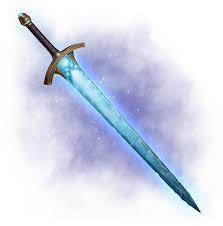 When it comes to treasure I completely agree with a statement Bruce Lynch made in a review over at his Ten Foot Pole site. He had this to say about a sword that can be recovered in the module ASE 2-3, arguing why the module’s author was clever for creating a named weapon: “Why would anyone ever put in a ‘+1 sword’ when you could put in ‘Aidru, Slayer of Men. Continually slowly drips blood because of all the people it’s killed.’ THEN you can give it a power. Even ‘+1’. I’ll take the Sword of Unlife and Aidru, Slayer of Men over a hundred +1 swords. Players get attached to unusual and unique magic items, be it their powers or their descriptions. They have their characters hang on to them long after they are useful. That’s the kind of thing you want to have happen in your RPG.”
When it comes to treasure I completely agree with a statement Bruce Lynch made in a review over at his Ten Foot Pole site. He had this to say about a sword that can be recovered in the module ASE 2-3, arguing why the module’s author was clever for creating a named weapon: “Why would anyone ever put in a ‘+1 sword’ when you could put in ‘Aidru, Slayer of Men. Continually slowly drips blood because of all the people it’s killed.’ THEN you can give it a power. Even ‘+1’. I’ll take the Sword of Unlife and Aidru, Slayer of Men over a hundred +1 swords. Players get attached to unusual and unique magic items, be it their powers or their descriptions. They have their characters hang on to them long after they are useful. That’s the kind of thing you want to have happen in your RPG.”
Right on, Bruce. He’s one of my very favorite reviewers for reasons I’ll discuss in later posts, and I fully agree with him there. Treasures should be cooool and memorable. I love handing memorable objects out to players, or just reading about them and thinking about what things like them could do in a story.
The Mother of All Treasure Tables. So you’re designing an adventure, or some old ruins, and you need some really nifty stuff lying around that’s not magic? THIS is the place to turn if you’re wanting great description. The contents are arranged by size and value, to more easily fit your needs. And the material is so interesting your players may not even want to sell it, but add it to their holdings. Check this out, from page 134, part of a horde with 30,000 gold pieces. Maybe it’s one of the mundane things in a wizard’s tower: “Next to the clock sits the spyglass on its tripod. The legs of the tripod are made of polished cherry wood and capped with brass, and each is covered in stylized carvings of stars. The body of the spyglass is made of solid silver, and its surface is delicately etched with different constellations. The stars which comprise each constellation are picked out with inlaid gold, and three of the brightest stars are marked by pieces of golden topaz.” The book is jammed with stuff like this — that’s ALL the book contains, apart from a little front matter. I liked it so much I bought it in hardcopy.
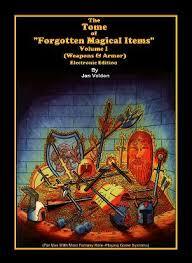 The Tome of Forgotten Magical Items comes in two volumes, (aptly named Volume I and Volume II) and I recommend them both. These books are a lot more basic in their presentation than some others on my favorite list, and they aren’t crammed full of named stuff like Aidru, Slayer of Men, but they do have tons of neat effects and ideas I’ve never seen in any other treasure manuals. I just randomly flipped to a page and found the Arrow of the Roc, which, when shot, magically transforms into a giant bird that the user can command to attack his enemies for ten rounds. If it survives, it flies peacefully away. See, weird and mythic. I love these books…
The Tome of Forgotten Magical Items comes in two volumes, (aptly named Volume I and Volume II) and I recommend them both. These books are a lot more basic in their presentation than some others on my favorite list, and they aren’t crammed full of named stuff like Aidru, Slayer of Men, but they do have tons of neat effects and ideas I’ve never seen in any other treasure manuals. I just randomly flipped to a page and found the Arrow of the Roc, which, when shot, magically transforms into a giant bird that the user can command to attack his enemies for ten rounds. If it survives, it flies peacefully away. See, weird and mythic. I love these books…
I Loot the Body is one of many great Raging Swan Press supplements. This book features tables with loads of intriguing, disgusting, or story-hooking kind of things your intrepid adventurers can find on the clerics, rogues, warriors, and wizards they fell, not to mention stuff within their bags of holding. There’s even some tables for random things you can find on minions. This thing is GREAT. My players still talk about the weird stuff they discovered on a bag of holding years ago, all generated from a table in this book, like the mounted badger skeleton, it’s mouth containing an animate scroll. They never found the courage to read it aloud to see what would happen…
Weird treasures you find from looting get more mention in Raging Swan Press books GM’s Miscellany: 20 Things Volume 1, Volume 2, and Volume 3. That’s not the primary function of these books, and I’ll discuss them more in later write-ups, but 1 for instance has a number of nifty charts, like 10 things you can find in a gelatinous cube and 20 things to loot from a dead kobold, while Volume 2 has almost 20 pages given over to charts like 10 remarkable long swords, or 20 things to loot from a dead cultist, or 10 things to find in a giant’s sack (and more). It’s all entertaining and adds to story development.
All That Glimmers is another Raging Swan Supplement, and an excellent one, featuring loot both mundane and magical, divided by monetary value and appropriate character level. That’s Pathfinder level, but I find even if you’re not using Pathfinder it’s still great. It’s divided into sections on hoards, amour (this being a British publication), weapons, miscellaneous treasures like coins and books and art objects, spell books, treasure maps, and intelligent magic items. A lot of the sections have some great suggested hooks & complications.
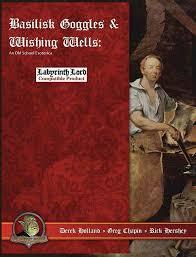 Basilisk Goggles and Wishing Wells has some wonderfully evocative, clever treasures I haven’t seen in other places. A few are for more modern or even science fiction settings, but the majority are fantasy fare. The contents aren’t quite gonzo, they’re just fun, like magic torches, or magic pigments, or new Ioun stones. Things I’ve just never thought of.
Basilisk Goggles and Wishing Wells has some wonderfully evocative, clever treasures I haven’t seen in other places. A few are for more modern or even science fiction settings, but the majority are fantasy fare. The contents aren’t quite gonzo, they’re just fun, like magic torches, or magic pigments, or new Ioun stones. Things I’ve just never thought of.
The folks at Tabletop Adventures always do great work, and when it comes to treasure books they’ve got some really neat ones. I can highly recommend the following: Bits of Magica: Pocket Items, Bits of Magica: Rings & Jewels, and Bits of Magica: Mystic Writings. Each one of these brings really inspired stuff to the game table — cool rings and jewelry with small but intriguing effects, tomes, scrolls, and other great stuff you can find lying around, and strange, compelling or downright creepy pocket items you might want your characters to get hold. Take note — you can get all three as a bundle at a reduced cost. Something a lot of online publishers at RPGNow/Drivethrurpg.com do, so keep your eye sharp!
I’m a huge fan of The Figurines of Wondrous Power, and I’ve seen a lot of expansions and add-ons to them over the years. My favorite is titled E.N. Treasure Troves: Figurines of Wondrous Power, and has lots of swell extra animals, like the blue baboon, or the diamond eagle. It’s intended for 3.5 D&D games, but most flavors of D&D and its offshoots have interchangeable mechanics. I just ignore the majority of the stat blocks myself and apply the great ideas.
Lastly, you can’t miss the ludicrously inexpensive Wondrous Wand Effect Generator. I love the idea of a Wand of Wonder, but the one in the original DM’s guide wasn’t nearly interesting enough, and was a little too deadly to the user. This one is AWESOME and far more entertaining. Every time the player in my adventures who carried this thing pulled it out the other players cringed, knowing something totally awesome or totally useless but completely entertaining would take place. Oddly enough, no one had reviewed the product until I swung past this morning to do so. Help me spread the word on it. I really ought to see if other products from the same creator have the same punch.
July 10, 2018
Beta Readers
 The other day I was asked what the best way to find beta readers was. In short form, you have to network with other writers.
The other day I was asked what the best way to find beta readers was. In short form, you have to network with other writers.
I found my first beta readers when I joined critique groups almost a quarter century ago. Some of those experiences were, at best, useless, so you should never be afraid to walk away from a crit group that exists, for instance, solely to teach ONE way to write, to knock down other writers, or, more benignly, is full of people who only get one genre, and it’s not the one you’re writing.
 Now you can sometimes get great feedback from a thoughtful reader from outside your genre, but being part of a group that knows nothing about fantasy adventure when that’s what you’re crafting is like beating your head against a wall every time they discuss your work.
Now you can sometimes get great feedback from a thoughtful reader from outside your genre, but being part of a group that knows nothing about fantasy adventure when that’s what you’re crafting is like beating your head against a wall every time they discuss your work.
Anyway, I joined critique groups. Sometimes I’d be lucky, and there’d be a couple of people in the crit group who had useful and interesting things to say. I would keep in touch with them, and we’d continue to exchange manuscripts even if the group fell apart.
What then developed, for me, were critique exchanges, or alpha and beta readers. People I trusted to read my work, and people who trusted my own input. Once I started getting published, I’d read the other stories in the magazines where I was printed, and if I really liked the stories, I’d write my fellow author a note. Sometimes we’d really hit it off and I’d discover they liked my work as well, and bam, friendships and critique exchanges developed. That’s actually how I became pals with E.E. Knight and Osprey’s Joseph McCullough.
I’m not entirely sure how you find a critique group these days, but I know that there are writer groups online, so it’s probably not too dissimilar from when I was doing it twenty years ago, and they may even be simpler to find than they were then.
Of course one of my best beta readers is my wife. She wasn’t always as good at it, or perhaps not as good as she is now at communicating her ideas and concerns, but at this point she has great storytelling instincts. My oldest child is turning into a talented plotter as well, and I often bounce ideas off of him. I suppose you could say he’s home grown.
So… it really comes down to putting in some time and forging connections, or maybe taking a generation to train up a useful assistant.
July 9, 2018
Novel Lessons 4.5: Between the Novels Part 1
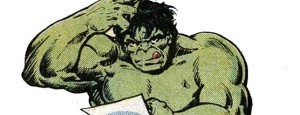 After I took my last post about novel writing live I realized that I’d left a few things out.
After I took my last post about novel writing live I realized that I’d left a few things out.
I’ve written before on the importance of reading outside the genre. I’d been doing so, narrowly, for years, because I had never been a solely “sword-and-sorcery” or even “fantasy” reader. After all, I started with science fiction, and pretty soon I was readily interested in reading historical fiction, at least of the swashbuckling sort. But these genres, or at least the flavors I usually prefer, are closely related.
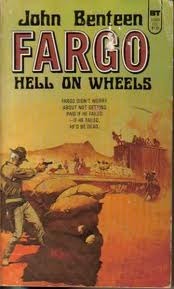 The first westerns I read, outside of Lonesome Dove, were by Ben Haas (writing as John Benteen). If you want to know what I loved about them and why you should read them, check out my earlier posts (most prominently here, and here). What I saw as a fantasy writer that I immediately began to apply were wonderful details about how a scout uses the wilderness — not just tracking, although that kind of information was a godsend, but how the landscape looks and how people use that landscape and are aware of it if they’re hunting for someone, or being hunted. And then there are the fantastic bits about bow use and archery, and working with horses.
The first westerns I read, outside of Lonesome Dove, were by Ben Haas (writing as John Benteen). If you want to know what I loved about them and why you should read them, check out my earlier posts (most prominently here, and here). What I saw as a fantasy writer that I immediately began to apply were wonderful details about how a scout uses the wilderness — not just tracking, although that kind of information was a godsend, but how the landscape looks and how people use that landscape and are aware of it if they’re hunting for someone, or being hunted. And then there are the fantastic bits about bow use and archery, and working with horses.
After just a few of Haas’ books I began to realize that most fantasy writers were just making this stuff up, and that Haas was portraying these details as they really were, or, perhaps as they really were in the best or most exciting conditions.
I studied not only Haas’ gifts with pacing, and his clear, crisp prose, but all the aforementioned subjects and more. I was eager to soak them up and emulate them, and you can begin to see that influence in Stalking the Beast. I think Elyana is much more aware of the environment and how to use it than my characters ever were before. And there are occasional flashes of her rapport with horses as well, although given that much of the journey is in deep woods, I didn’t get to apply much of my gathered wisdom on that topic.
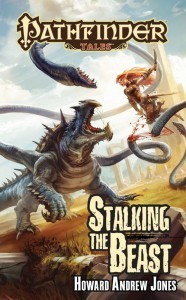 As an aside, I should mention that I actually own horses. Now that’s wonderful for seeing how they behave, and getting comfortable around them, and if I ever wanted to write a novel about mucking stalls and brushing horses I could totally kick ass on those descriptive passages. But caring for horses in a modern setting is worlds apart from riding one into battle or shooting a bow from the back of one.
As an aside, I should mention that I actually own horses. Now that’s wonderful for seeing how they behave, and getting comfortable around them, and if I ever wanted to write a novel about mucking stalls and brushing horses I could totally kick ass on those descriptive passages. But caring for horses in a modern setting is worlds apart from riding one into battle or shooting a bow from the back of one.
Next week I’ll talk about the lessons I learned from working 4-6 months on a novel that’s yet to be complete, and then I’ll get back to discussing the ones that have been published.
July 6, 2018
Things Just Got Real
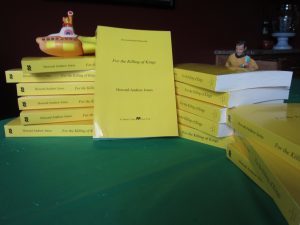 My publisher just sent me a big stack of bound manuscripts of my upcoming novel. Here they are. These aren’t advanced reader copies, or ARCs, as they’re known in the industry, which are intended for reviewers so they can (hopefully) say wonderful things about your work to anyone who will listen. Bound manuscripts precede even that, and are to be used to obtain (again, hopefully) blurbs from well-known authors extolling the work.
My publisher just sent me a big stack of bound manuscripts of my upcoming novel. Here they are. These aren’t advanced reader copies, or ARCs, as they’re known in the industry, which are intended for reviewers so they can (hopefully) say wonderful things about your work to anyone who will listen. Bound manuscripts precede even that, and are to be used to obtain (again, hopefully) blurbs from well-known authors extolling the work.
Promotion is my least favorite part of this whole business because it’s hard to know if your hard work is paying off… but I’m a little more experienced now with this kind of thing, and I have a great deal of faith in this book. My God, but I’ve been working on it for a long time. The question is, how long? It’s hard to be sure. What stage do I count? Three of the principal characters have been trying to get me to tell stories about them for at least a quarter century, but those early efforts never reached the finish line. Fifteen years ago I completed multiple drafts of a first book, and even most of the draft of a second, that contained those characters, secondary characters that carried forward, and included many concepts I decided to keep.
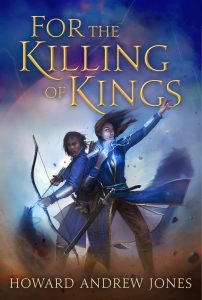 But I wasn’t quite skilled enough to get it right. I started in earnest on THIS version some time in 2014, but it’s required a lot of tinkering. I yanked out an entire sub-plot from the initial draft after my editor and chief alpha reader expressed little interest in it. And I had to keep experimenting to get the feel right — a longer book (one hundred fifty thousand words) so that it felt more like the epic size people seem to want, but one that pleased me because it quickly built up to freight train pacing, and didn’t have padding.
But I wasn’t quite skilled enough to get it right. I started in earnest on THIS version some time in 2014, but it’s required a lot of tinkering. I yanked out an entire sub-plot from the initial draft after my editor and chief alpha reader expressed little interest in it. And I had to keep experimenting to get the feel right — a longer book (one hundred fifty thousand words) so that it felt more like the epic size people seem to want, but one that pleased me because it quickly built up to freight train pacing, and didn’t have padding.
Until now it existed only as pixels on my screen, or, occasionally as a lengthy print out on 8 1/2 by 11 sheets of a paper. For the first time it looks like a book.
Man, I hope people like this one. I hope they buy it in droves. I love these characters. Maybe readers will too.
This weekend I’ll head out and buy proper sized shipping envelopes. Monday I start sending them away.
As for what it’s about, I’ll be blathering on that incessantly soon enough. The elevator pitch remains “Chronicles of Amber crossed with The Three Musketeers” and the official back cover copy reads as follows. I’m going to paste it below and then go get to work revising book 2:
Their peace was a fragile thing, but it had endured for seven years, mostly because the people of Darassus and the king of the Naor hordes believed his doom was foretold upon the edge of the great sword hung in the hall of champions. Unruly Naor clans might raid across the border, but the king himself would never lead his people to war so long as the blade remained in the hands of his enemies.
But when squire Elenai’s aging mentor uncovers evidence that the sword in their hall is a forgery she’s forced to flee Darassus for her life, her only ally the reckless, disillusioned Kyrkenall the archer. Framed for murder and treason, pursued by the greatest heroes of the realm, they race to recover the real sword, only to stumble into a conspiracy that leads all the way back to the Darassan queen and her secretive advisors. They must find a way to clear their names and set things right, all while dodging friends determined to kill them – and the Naor hordes, invading at last with a new and deadly weapon.
Howard Andrew Jones’ powerful world-building brings this epic fantasy to life in this first book of his new adventure-filled trilogy. You can pre-order it here.
July 5, 2018
Writing Epiphanies
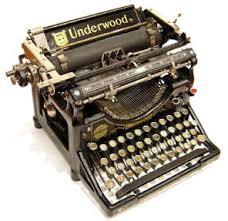 I had a great writing epiphany yesterday morning, and I’ll be darned if I can find a way to apply it globally. I tried explaining it to Hocking earlier today as I was running some errands and yammered at him on the phone. Often talking story over with him brings clarity, but the more I talked, the more I realized how much I didn’t really know why the idea made so much difference to the work in progress.
I had a great writing epiphany yesterday morning, and I’ll be darned if I can find a way to apply it globally. I tried explaining it to Hocking earlier today as I was running some errands and yammered at him on the phone. Often talking story over with him brings clarity, but the more I talked, the more I realized how much I didn’t really know why the idea made so much difference to the work in progress.
I’ll try, though, on the off-hand chance it will help you other writers.
I’ve been chipping away at the middle of the book, with a new(ish) viewpoint character. She’s been a minor background player in the books until now, but I needed a new perspective on what was happening, and so for about 30 thousand words you get her. The problem was that I didn’t know her very well. Like a dutiful writer, I pulled out my character creation guide (designed by yours truly) and filled it out, and it helped enough that I was able to finish a roughish draft of 20k. Her personality came into more shape as I polished it up on second pass (and the word count rose), but it still felt like something was missing. How, I wondered, was she different from the other view point characters. Was she interesting? Was she likeable, and if not, was she at least interesting to watch?
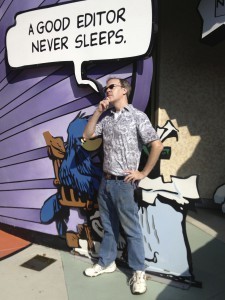 I wasn’t sure, but the plot was working, so I kept slugging away. And then yesterday morning as I was washing dishes — something Agathie Christie swore by for plotting, actually — it hit me. And here’s the part where it totally worked and everything fell into place, but my explanation just sounds lame. She’s an artist. Suddenly I knew what she was doing in her downtime. Suddenly I knew her perspective, and had a better handle on her personality. Her section began to click, along with her relationships to other people that would bring everything to life.
I wasn’t sure, but the plot was working, so I kept slugging away. And then yesterday morning as I was washing dishes — something Agathie Christie swore by for plotting, actually — it hit me. And here’s the part where it totally worked and everything fell into place, but my explanation just sounds lame. She’s an artist. Suddenly I knew what she was doing in her downtime. Suddenly I knew her perspective, and had a better handle on her personality. Her section began to click, along with her relationships to other people that would bring everything to life.
I don’t know what can be applied broadly from the epiphany. The answer is not: make your character an artist.
Maybe the answer is get to know your characters a lot. The more you know them, the better you can bring them to life, but I knew that, and was trying to do that from the start. Today I’m not even going to finish turning the back third of this into “second draft.” I’m going over the first two thirds and use this newfound insight to bring her to better life, and by the time I get to the last third I’ll be making the whole thing third draft, if that makes sense. In other words, two more full drafts won’t be needed on the rough of the last third, because I’ll have found a way to polish it properly the first go over by knowing my character.
Tomorrow I will ramble less.
Howard Andrew Jones's Blog
- Howard Andrew Jones's profile
- 368 followers



